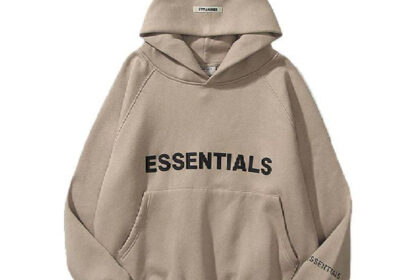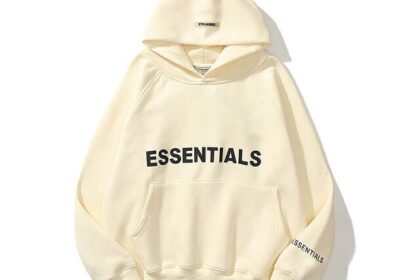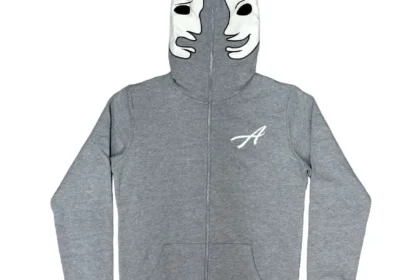The National Football Team Jersey serves as a deep personal item that fans cherish. The authentic shirt displays your national pride through its chest design, while it represents your heritage and personal relationship with the team.
The growing popularity of football shirts has led to the arrival of fake products, which sometimes manage to fool even expert fans. It is necessary to know that if you want to buy for yourself or as a gift for someone else, how to differentiate between the authentic national football team shirt and fake versions.
Here’s a thorough tutorial by False9Fits to assist you in distinguishing between the fake and guaranteeing you are getting the genuine article.
1. Verify the Price: If anything seems to be too good to be true, it likely is
Real national football team jerseys cost as they are made of premium materials. Official home or away shirts cost between $90 and $130 (USD) on average, depending on the team and supplier.
A huge warning sign is seeing a brand-new kit advertised for $20$40. Although rebates are present, particularly at the close of a competition cycle, steep cuts on recent releases normally point to a fake.
Suggestion: Compare prices across a number of respected websites. Be careful if one source is much less expensive for no seasonal justification.
2. Purchase From Authorized Vendors Or Official Retailers
Buy from reputable merchants to most safely avoid fakes. Among them:
- Authorized stores for national teams (e.g., Germany’s DFB-Fanshop or England’s FA Store)
- Brand websites such as Nike, Adidas, and Puma
- Licensed stores (like Pro: Direct Football, Kitbag, and JD Sports)
- Online markets like eBay or Wish might be more dangerous. Amazon itself demands additional care: when feasible, check seller reviews and seek “Fulfilled by Amazon” labels.
3. Evaluate The Quality Of The Crest And Logo
Poor-quality logos and national crests are among the most evident indications of a fake shirt. On actual national football team shirts:
- Logos are exactly embroidered or heat-applied, with clean edges and no fraying.
- The official designs include bright hues.
- The stitching is straight and clean.
Fake shirts, in contrast, typically feature:
- Logos that are off-centred or somewhat tilted
- Faded hues or wrong shades
- Loose threads or uneven sewing
Compare what you’re buying with a close-up image of an actual kit from the national team’s website.
4. Feel the Construction and Fabric
Designed for comfort, breathability, and durability, real kits use high-performance materials. Popular innovations include Nike’s Dri-FIT, Adidas’s AEROREADY, or Pumas dryCELL.
Counterfeit shirts typically:
- Feel heavier or rougher
- Lack of ventilation zones or mesh panels
- Post washing, they shrink or fade rapidly.
Gently stretch the fabric if you already have the shirt in hand; it ought to resume its original shape. Fakes usually feel rigid and plastic-like or lack elasticity.
5. Look for Licensing Tags and Holograms
Every official national football team jersey includes branded tags, inner labels, and authenticity holograms. Depending on the brand, you usually will find:
- A holographic authenticity badge close to the neck or hemline
- Inner tags with product codes on the brand’s website
- Multi-lingual wash-care labels
Fake shirts might miss the hologram altogether or include one that is badly printed, pixelated, or lacking important features.
6. Check the Fit and Cut
Official shirts are made to be slim-fit and performance-driven, especially the player versions. Normally, there are two variations:
- Looser fit designed for supporters: Stadium/Replica
- Player/Authentic: Lighter weight, technical materials, and tighter fit
- Often, getting this incorrect is a fake. If the shirt fits oddly, boxy, or unevenly tapered, it could not be authentic.
Tip: Before buying, examine the official site’s size charts. Contrast the results against the goods you are considering.
7. Compare the Official Version to the Design
Always check the official team website or kit statement before making a purchase. Keep a close watch on:
- Collar pattern
- Specific information for sleeves
- Sponsorship positioning, if any
- Patterns on the material, some have distinctive graphics or embossing
Counterfeit copies sometimes miss little points or misplace them somewhat, for instance, applying a design meant for the away shirt to the home shirt design.
8. Focus on Packaging
Genuine shirts often arrive in branded packaging—plastic covers with logo, hangtags, and size stickers.
Fakes might come in unmarked plastic bags or packaging resembling generic products. Common red giveaways are missing hang tags, misspelled words, or repurposed packaging.
Concluding Ideas
Real national football team shirts place importance on the shirt as well as the style. Whether you are buying for yourself, giving to a dedicated fan, or gathering rare kits, the real thing is guaranteed: that you are honouring the game and the club you love.
As fakes become more clever, you need to study, buy your studies wisely, and be aware than ever of what to see. Every detail is counted, from stitching on the sleeve to the crest on the chest.
False9Fits suggests ensuring it withstands examination, just as your football loyalty does, the next time you are buying a shirt.




